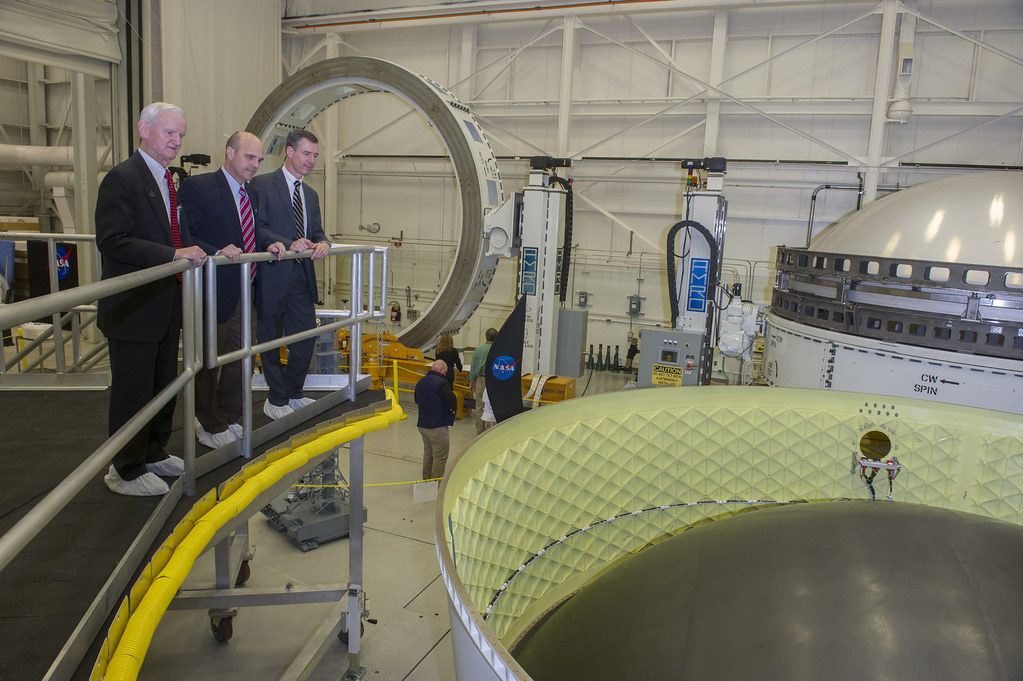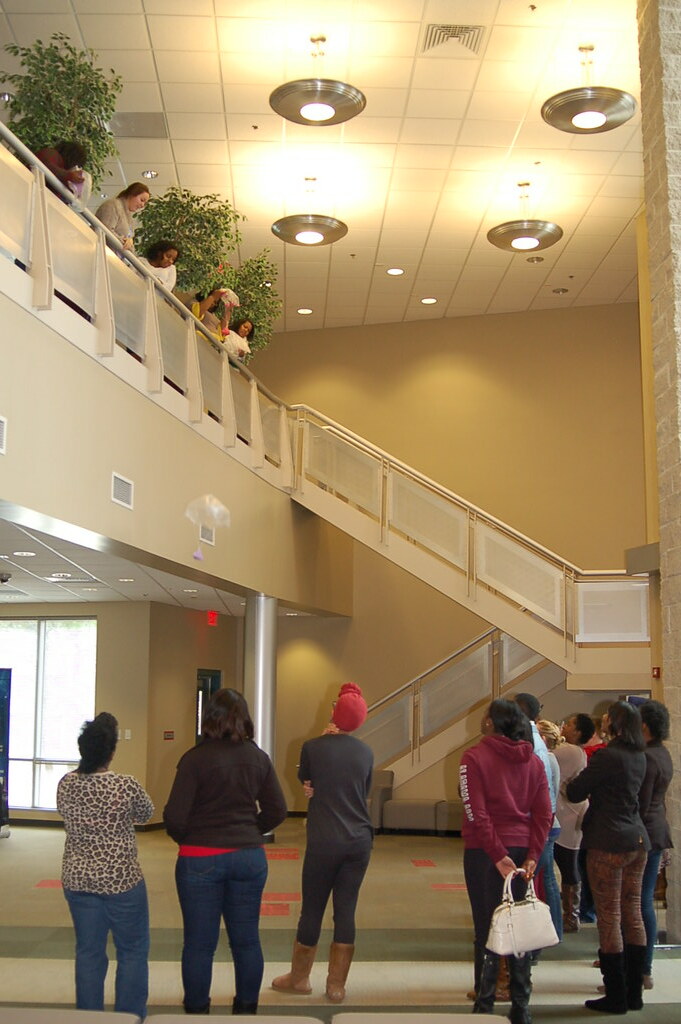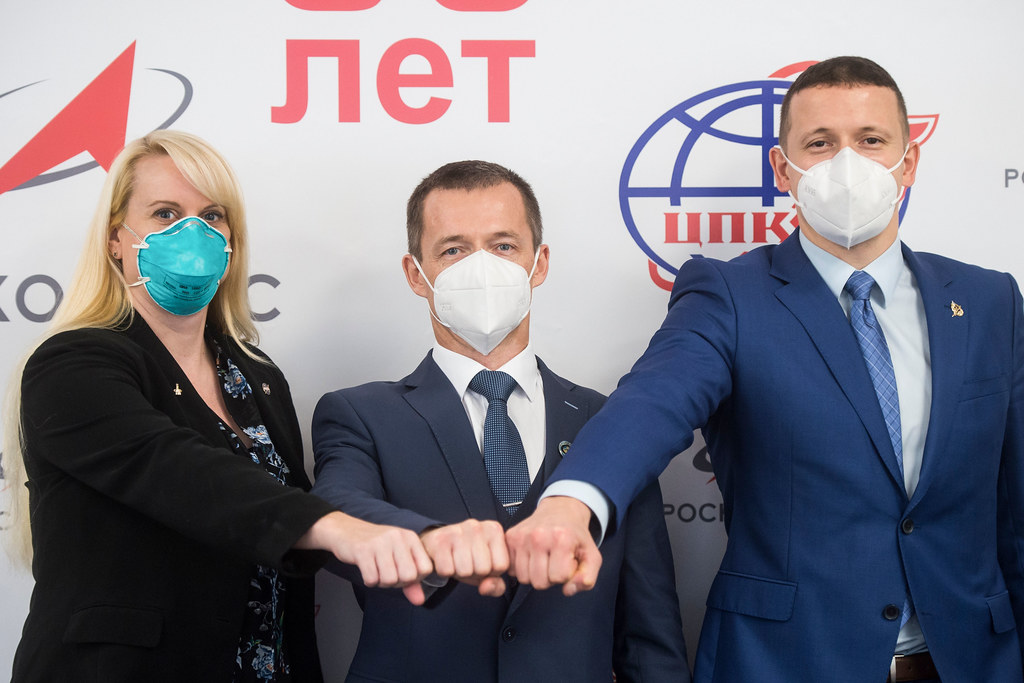Leadership and Management Are Not Always the Same: Random acts of kindness in the form of compliments or deference can keep managers/teachers riding a positive wave of feedback from employees or students. It is especially important to do this with employees/students who are struggling. I have found that these individuals typically have a very active inner critic that does not allow them to see the positive in anything. I see this in my students a lot, especially the ones who struggle. By high school they have been told over and over that something is wrong with them, they are not good enough, etc.
Making an effort to connect with these students in a non-judge mental way Can really win them over to where they can feel comfortable learning and improving. This is key to reaching these students, but applies to adults as well. Focusing on the positive Can be a very powerful technique in any management position.
Thanks for reading: Leadership and Management Are Not Always the Same on Bunchiesblog. Check out some of my other recent articles! Feel free, to like, comment, subscribe and share, it is always much appreciated!



The Power of Positive Reinforcement: A Manager’s: Leadership is and Teacher’s Secret Weapon
By Michael Bunch and Chat GPT
As a manager or teacher, our roles extend far beyond just imparting knowledge and ensuring tasks are completed. We have the incredible opportunity to shape the lives and careers of those we lead, guiding them towards success and personal growth. One of the most effective tools in our leadership toolbox is positive reinforcement. By recognizing and praising the efforts and achievements of our team members or students, we can foster a positive and empowering environment that breeds motivation and enthusiasm, thus leadership and management are not the same.
- Boosting Confidence and Self-Esteem:
Positive reinforcement acts as a confidence booster for individuals under our guidance. When employees or students receive recognition and appreciation for their hard work, they feel valued and acknowledged. This acknowledgment reinforces their belief in their abilities, boosting self-esteem and encouraging them to take on more challenges with a can-do attitude. Confidence is the cornerstone of success, and as managers or teachers, we can play a crucial role in helping our followers develop that confidence through consistent positive reinforcement.
- Fostering Intrinsic Motivation:
Intrinsic motivation, the internal drive to excel and achieve, is a powerful force that fuels long-term success and dedication. Positive reinforcement taps into this intrinsic motivation by making individuals feel accomplished and satisfied with their efforts. Unlike external rewards or punishments, which may lead to short-term compliance, positive reinforcement focuses on the joy of achievement itself. When individuals experience the intrinsic satisfaction of a job well done, they become more self-motivated to continue striving for excellence.



- Building Trust and Loyalty:
Trust is the foundation of any successful manager-follower or teacher-student relationship. Positive reinforcement helps build trust by creating a supportive and nurturing environment. When individuals feel appreciated and respected for their contributions, they develop a deeper sense of loyalty towards their leader or teacher. This trust is a two-way street – when followers know their efforts will be recognized and rewarded, they are more likely to invest themselves fully in their tasks, leading to greater productivity and commitment. Leadership can then take role of guide rather than taskmaster.
- Strengthening Relationships:
Positivity is contagious. As managers or teachers, when we lead with positive reinforcement, we set the tone for a collaborative and harmonious working or learning environment. Praise and recognition create a sense of camaraderie among team members or students, fostering a culture of mutual support and encouragement. Strong relationships among team members or students are essential for effective collaboration and cohesive teamwork.
- Encouraging Continuous Improvement:
Positive reinforcement does not mean overlooking mistakes or shortcomings; instead, it emphasizes growth and development. When individuals receive constructive feedback and are praised for their efforts, they are more likely to view mistakes as opportunities to learn and improve. This creates a growth mindset, where failures are seen as stepping stones to success rather than roadblocks.In conclusion, positive reinforcement is a powerful tool that can transform the dynamics within a team or classroom. As managers or teachers, our words of appreciation and encouragement have the potential to inspire greatness in our followers, propelling them to achieve their goals and reach new heights. By harnessing the power of positivity, we can create an uplifting and motivating environment that fosters personal and collective growth, ultimately setting the stage for success for everyone involved.
The Power of Intrinsic Motivation: Elevating Performance in Employees and Students In Our Respective Fields

Unleashing the Power of Intrinsic Motivation: Elevating Performance in Employees and Students As leaders in our respective fields, we strive to bring out the best in our employees and students, guiding them towards excellence and success. While external rewards and incentives have their place, fostering intrinsic motivation within our teams and classrooms can be a game-changer in improving overall performance. Intrinsic motivation, driven by internal factors and personal satisfaction, can unleash untapped potential and lead to remarkable outcomes. Let’s explore how cultivating intrinsic motivation can elevate performance for everyone involved.
- Cultivating Passion and Purpose:
Intrinsic motivation arises from a deep sense of passion and purpose. When employees or students are genuinely passionate about their work or studies, they become naturally driven to excel. As leaders, we can ignite this passion by connecting their roles to a higher purpose or a meaningful vision. By showing how their contributions align with the greater objectives of the organization or the knowledge they gain contributes to their personal growth, we instill a sense of purpose that fuels their intrinsic drive.
- Encouraging Autonomy and Creativity:
Intrinsic motivation thrives in an environment that values autonomy and encourages creativity. When employees or students are given the freedom to make decisions and explore innovative approaches, they feel empowered and take ownership of their work. This autonomy fosters a sense of responsibility, and they become more invested in the outcomes of their efforts. In turn, this ownership fuels their motivation to perform at their best and surpass expectations.



- Focusing on Mastery and Growth:
Intrinsic motivation is closely tied to the pursuit of mastery and continuous growth. When employees or students are encouraged to focus on improving their skills and knowledge, they become more self-driven learners. As leaders, we can foster this by providing opportunities for professional development, offering constructive feedback, and recognizing progress along the way. The pursuit of mastery becomes its own reward, driving them to push their boundaries and excel in their roles or studies.
- Building a Supportive Community:
Creating a supportive and collaborative community is essential for nurturing intrinsic motivation. When employees or students feel a sense of belonging and camaraderie, they are more likely to be engaged and committed to the group’s collective success. As leaders, we can facilitate team-building activities, foster open communication, and celebrate each individual’s successes to build a positive and uplifting environment. This supportive community fosters intrinsic motivation as team members or students motivate and inspire one another to achieve greatness.
- Emphasizing Meaningful Feedback:
Feedback is a powerful tool for promoting intrinsic motivation. As leaders, our constructive feedback can guide employees or students towards improvement and growth. It is crucial to offer feedback that is specific, actionable, and focuses on effort and progress rather than mere outcomes. Meaningful feedback shows that we are invested in their success, and it fuels their motivation to continue striving for excellence. In conclusion, fostering intrinsic motivation in employees and students can lead to a transformational improvement in performance. By igniting passion, granting autonomy, encouraging growth, building a supportive community, and providing meaningful feedback, we create an environment where intrinsic motivation thrives. As employees and students are driven by internal satisfaction and a sense of purpose, they become self-motivated and committed to achieving their best. As leaders, embracing intrinsic motivation is the key to unlocking the full potential of our teams and classrooms, setting the stage for remarkable achievements and collective success.
Building Trust and Loyalty: The Cornerstone of a Productive Working Environment



Building Trust and Loyalty: The Cornerstone of a Productive Working EnvironmentIn any organization or educational setting, trust and loyalty are invaluable assets that can pave the way for a highly productive and harmonious environment. As leaders, it is crucial to invest time and effort in developing these qualities among our employees or students. By fostering an atmosphere of trust and loyalty, we create a solid foundation upon which success can thrive. Let’s explore the benefits of cultivating trust and loyalty and how they contribute to a more productive working or learning environment.
- Enhanced Communication and Collaboration:
Trust is the backbone of effective communication and collaboration. When employees or students trust their leaders and colleagues, they feel comfortable expressing their ideas, concerns, and suggestions openly. This open communication fosters a culture of transparency, where valuable insights are shared and issues are addressed promptly. The free flow of information enables teams to make well-informed decisions, leading to more efficient problem-solving and better outcomes.
- Increased Employee Engagement:
Loyal and trusted employees or students are more likely to be deeply engaged in their work or studies. When they have confidence in the organization’s or teacher’s values and vision, they align their personal goals with the collective objectives. Engaged individuals go the extra mile, displaying higher levels of commitment and dedication to their tasks. This heightened engagement translates into increased productivity and a higher quality of work or academic performance.
- Improved Retention and Reduced Turnover:
Trust and loyalty play a significant role in employee or student retention. When individuals feel valued and supported, they are less likely to seek opportunities elsewhere. They become invested in the success of the organization or the learning environment and are more inclined to remain loyal even during challenging times. Reduced turnover leads to more stable teams or classrooms, allowing for continuity and the development of long-term strategies.



- Empowered Risk-Taking and Innovation:
In an environment built on trust and loyalty, employees or students are more willing to take calculated risks and explore innovative solutions. They know that their efforts will be appreciated, and even if they encounter setbacks, they won’t face harsh consequences. This freedom to experiment fosters a culture of creativity and innovation, where individuals are encouraged to think outside the box and contribute fresh ideas that drive progress and growth.
- Increased Productivity and Efficiency:
A productive working or learning environment relies on efficient teamwork and streamlined processes. When trust and loyalty are prevalent, the focus shifts from internal competition to collaborative efforts towards shared goals. Teams work cohesively, leveraging each other’s strengths and expertise to achieve objectives more efficiently. As a result, productivity improves, and tasks are completed with greater effectiveness and accuracy.
- Positive Organizational Culture:
Trust and loyalty form the bedrock of a positive organizational or educational culture. When individuals feel valued and appreciated, they develop a sense of pride and satisfaction in being part of the team or learning community. A positive culture boosts morale and creates a supportive atmosphere, promoting employee well-being and academic engagement. In turn, this positivity ripples through the entire organization or classroom, fostering a cycle of continuous improvement and success.
The Path to Effective Management: Embracing Mastery and Growth



In the ever-changing landscape of modern management, one key aspect stands out as the foundation of effective leadership: the pursuit of mastery and growth. As a manager, it’s not just about overseeing tasks and processes; it’s about guiding and empowering your team to reach their fullest potential. In this blog post, we will explore why focusing on mastery and growth is paramount for being an exceptional manager and how it can elevate both your team’s performance and your organization’s success.
- Cultivate a Learning Culture:
Effective managers understand the importance of fostering a learning culture within their teams. By encouraging continuous learning and skill development, they create an environment where team members feel motivated and empowered to take on new challenges. This culture of growth provides a sense of purpose and progress, leading to increased job satisfaction and reduced turnover rates.Promote learning opportunities such as workshops, training sessions, or even regular knowledge-sharing sessions within the team. Be supportive of individual learning paths and help team members set personal and professional development goals.
- Lead by Example:
To inspire growth and mastery within your team, you must first demonstrate your commitment to continuous improvement. As a manager, showcase your passion for learning and seek opportunities to enhance your skills. Share your experiences of overcoming challenges and highlight how continuous growth has contributed to your success as a leader.When your team sees you embracing a growth mindset, they are more likely to follow suit and adopt a similar approach to their own work and development.

- Provide Constructive Feedback:
Feedback is an essential tool for growth and mastery. As a manager, your feedback should not only focus on pointing out mistakes but also highlight areas for improvement and acknowledge progress. Constructive feedback offers valuable insights for your team members to refine their skills and approaches, fostering a culture of openness and trust. Create a safe and supportive space for team members to give and receive feedback, encouraging them to take risks, learn from failures, and grow from their experiences.
- Encourage Autonomy and Ownership:
Empower your team members by giving them the autonomy to make decisions and take ownership of their projects. Trusting your team’s abilities not only boosts their confidence but also allows them to explore and experiment, fostering an environment of mastery and growth.Provide guidance and support when needed, but avoid micromanaging. Remember that mistakes and challenges are valuable learning opportunities that contribute to personal and professional growth.



- Recognize and Celebrate Achievements:
Acknowledging the efforts and achievements of your team is vital in building motivation and reinforcing a growth-oriented mindset. Celebrate both individual and team successes, highlighting the progress made and the skills acquired. Recognition not only boosts morale but also encourages team members to strive for continuous improvement and aim for mastery in their respective roles.
Embracing Continuous Improvement through Positive Reinforcement



In the quest for achieving excellence, one powerful tool that effective managers possess is the art of positive reinforcement. Encouraging continuous improvement through positive reinforcement not only boosts team morale but also fosters a culture of growth, innovation, and success. In this section, we’ll explore the significance of positive reinforcement and how it can be applied to inspire and motivate your team to strive for constant growth.
- The Power of Positive Reinforcement:
Positive reinforcement involves recognizing and rewarding desired behaviors, actions, and achievements. It harnesses the power of appreciation and acknowledgment to reinforce behaviors that contribute to the team’s success and align with the organization’s goals. Unlike punitive measures that can create fear and anxiety, positive reinforcement focuses on building confidence and self-belief.When team members receive positive feedback and recognition for their efforts, they are more likely to feel valued and motivated to continue refining their skills and performance.
- Identify and Celebrate Small Wins:
Continuous improvement is not always about achieving significant milestones; it’s also about recognizing the small wins that collectively contribute to progress. As a manager, be attentive to the efforts and improvements made by your team members on a daily basis. Acknowledge their hard work and dedication, even in the face of minor achievements.By celebrating small wins, you create an atmosphere of positivity and optimism, encouraging team members to persevere and build upon their successes.
- Personalized Recognition:
Effective positive reinforcement goes beyond generic praise. Take the time to understand your team members’ individual strengths, aspirations, and areas for improvement. Tailor your recognition to align with their specific accomplishments and growth trajectories. Personalized recognition makes team members feel seen and appreciated, increasing their sense of belonging and commitment to the team’s goals.
- Provide Constructive Feedback Alongside Praise:
While positive reinforcement is essential for encouraging continuous improvement, it should not overshadow the need for constructive feedback. Complement your praise with constructive feedback that highlights areas for growth and offers guidance on how to further enhance performance.Balancing positive reinforcement with constructive feedback creates a well-rounded approach that inspires your team to embrace challenges and strive for mastery.
- Foster a Culture of Learning:
Link positive reinforcement to learning and growth by encouraging your team to engage in continuous education and skill development. Offer learning opportunities, such as workshops, training sessions, or access to educational resources, and recognize team members who take the initiative to expand their knowledge and expertise. By intertwining positive reinforcement with learning, you reinforce the message that growth and improvement are highly valued within the team.
Positive reinforcement serves as a potent catalyst for continuous improvement within your team. By acknowledging and celebrating their efforts, identifying and celebrating small wins, providing personalized recognition, offering constructive feedback, and fostering a culture of learning, you instill a sense of purpose and drive that fuels your team’s journey towards excellence. As a manager, your role in encouraging continuous improvement through positive reinforcement is instrumental in building a cohesive and high-performing team that is eager to learn, adapt, and excel in the face of challenges. Embrace the power of positivity, and you’ll witness your team thriving in an environment that nurtures their growth and celebrates their achievements.



Building Self-Esteem and Confidence in the Workplace through Positive Reinforcement
Section: Building Self-Esteem and Confidence in the Workplace through Positive Reinforcement in the bustling world of the modern workplace, fostering a positive and empowering environment is not just a nice-to-have; it’s a necessity for cultivating engaged and confident employees. As a manager, one of your most potent tools for achieving this is the strategic use of positive reinforcement. In this section, we will explore the importance of employing positive reinforcement to build self-esteem and confidence in the workplace, and how it can lead to a happier, more motivated, and high-performing team.
- Boosting Employee Morale:
Positive reinforcement acts as a powerful morale booster. When employees receive genuine appreciation and recognition for their efforts and achievements, it bolsters their sense of worth and value within the organization. As they experience the positive impact of their contributions, employees become more motivated and invested in their work.A workplace with high morale is characterized by employees who feel appreciated, supported, and inspired to reach their full potential.
- Nurturing a Culture of Support:
Positive reinforcement creates a culture of support and encouragement, where employees feel safe to take risks, express ideas, and learn from their experiences. This nurturing environment reduces fear of failure and empowers employees to step out of their comfort zones to explore new opportunities for growth.A supportive culture cultivates confidence and self-assurance, allowing employees to embrace challenges with a positive mindset.
- Recognizing Efforts and Progress:
Building self-esteem is not just about celebrating final achievements; it’s also about acknowledging the efforts and progress made along the way. Recognizing hard work, dedication, and incremental improvements sends a powerful message to employees that their journey toward success is valued, not just the end result.By celebrating the journey, positive reinforcement reinforces the belief that continuous improvement is an essential part of personal and professional development.
- Strengthening Employee-Manager Relationships:
Positive reinforcement fosters a deeper connection between managers and their team members. When managers actively recognize and praise employees’ contributions, it establishes a foundation of trust and mutual respect. This, in turn, creates a positive feedback loop, where employees are more open to feedback and are willing to seek guidance to further enhance their skills.Strong employee-manager relationships lead to better communication, more effective teamwork, and increased job satisfaction.
- Empowering Employees to Take Initiative:
When employees are consistently acknowledged and reinforced for their achievements, they become more confident in their abilities. This newfound confidence empowers them to take initiative and contribute their ideas and expertise proactively. Employees who feel empowered are more likely to take ownership of their responsibilities, initiate new projects, and drive innovation within the organization. In the fast-paced and competitive world of work, building self-esteem and confidence in employees is crucial for a thriving and successful organization. Positive reinforcement serves as the catalyst for creating an environment where employees feel valued, supported, and motivated to reach their fullest potential. As a manager, investing time and effort into recognizing and celebrating your team’s efforts can yield significant returns in terms of employee morale, engagement, and performance. By nurturing a culture of support, recognizing efforts and progress, strengthening employee-manager relationships, and empowering employees to take initiative, you create a workplace that not only fosters individual growth but also drives the collective success of the organization. Embrace the power of positive reinforcement, and you will witness a more confident, capable, and enthusiastic team that propels your organization towards greater heights.
Conclusion: How We Can Use Positive Reinforcement to be More Effective Managers in the Workplace and Classroom



In the fast-paced and ever-evolving world of modern management, the significance of positive reinforcement cannot be overstated. As we conclude our exploration of this powerful tool, it becomes abundantly clear that positive reinforcement is the bedrock upon which effective leadership is built. By fostering a culture of appreciation, support, and continuous growth, managers have the potential to transform their teams and organizations into thriving hubs of productivity and success. Positive reinforcement goes beyond simple praise; it is a strategic approach that acknowledges the efforts, progress, and achievements of team members. By doing so, it boosts employee morale, nurtures a supportive environment, and strengthens the bond between managers and their team.
Employees who feel valued and empowered through positive reinforcement are more likely to take initiative, innovate, and contribute actively to the organization’s goals. As managers, it is our responsibility to create a workplace that fosters self-esteem, confidence, and professional development. By consistently recognizing and celebrating the contributions of our team, we lay the foundation for a highly engaged and motivated workforce.
Positive reinforcement not only elevates individual performance but also fuels collective success, creating a positive ripple effect across the entire organization. Let us commit ourselves to the art of positive reinforcement as we lead our teams forward. Embrace the power of appreciation, constructive feedback, and personalized recognition to unlock the full potential of our employees. Together, we can create a workplace that inspires creativity, encourages growth, and celebrates the achievements of each team member. As we part ways, let us remember that in the realm of management, positive reinforcement is not just a fleeting technique but a long-term strategy that breeds enduring success. By uplifting and empowering those around us, we become architects of positive change, forging a path towards a brighter and more prosperous future for all. So, let us take the first step, and together, let us build a workplace where positivity thrives, self-esteem soars, and our teams thrive beyond measure.






What are your thoughts on this?